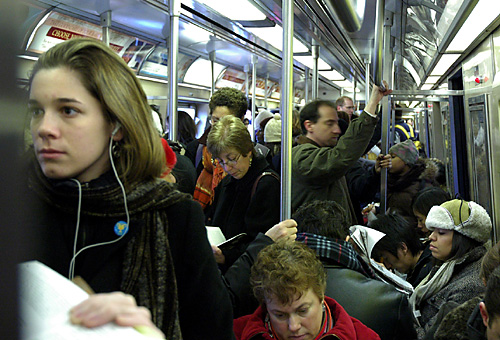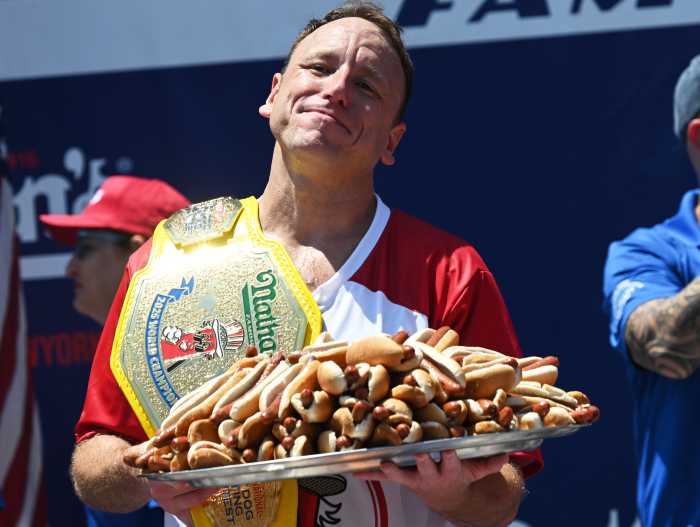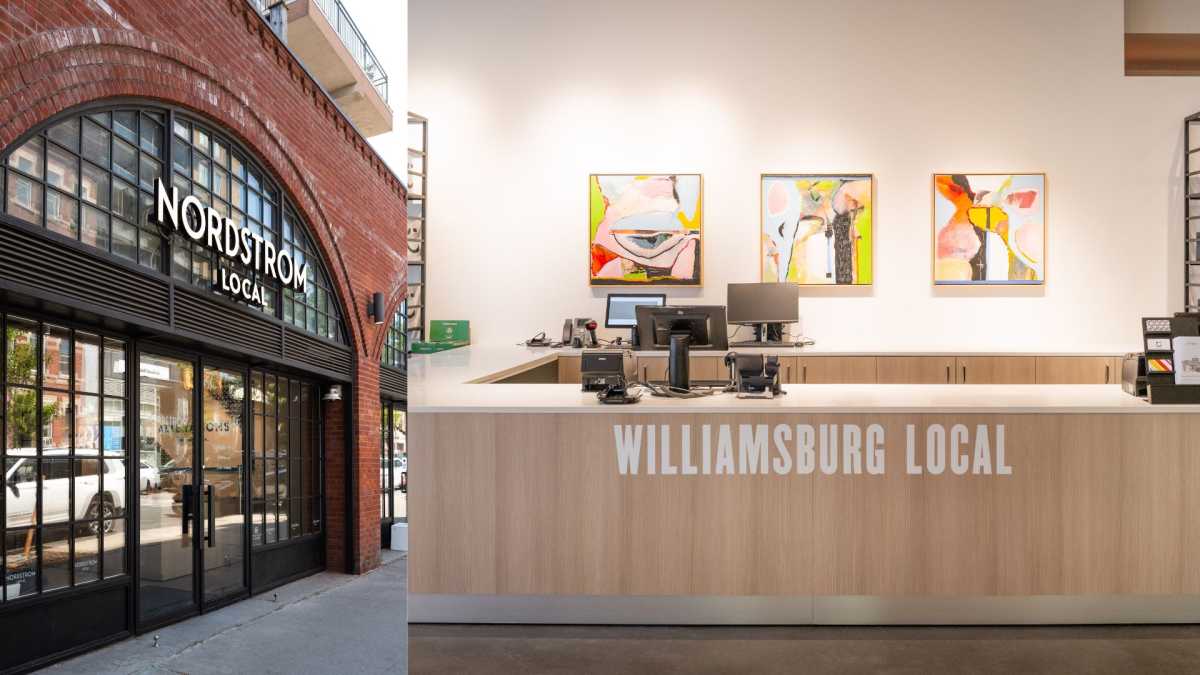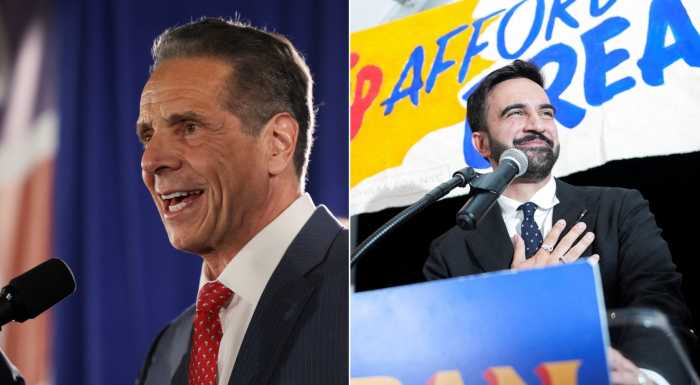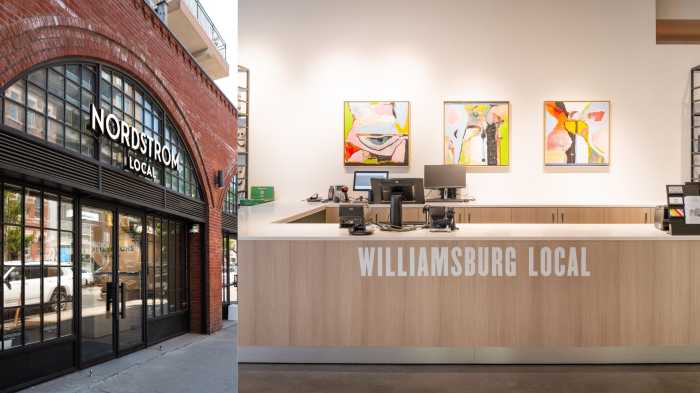There were 100 people already waiting for the F train when it pulled into the Seventh Avenue stop last Wednesday morning.
But the train was almost entirely packed by the time it showed up, and only a handful of commuters was able to get on.
A woman in a red coat was not one of them. And this was the second train she let go past her because it was too full to accommodate any more people.
She looked at her watch — it was 8:45 am — and huffed in disgust, hoping she could squeeze herself into the next train.
“Now I’m going to be late,” she grumbled.
This is the scene most weekday mornings at Park Slope’s Seventh Avenue stop — and it’s only getting worse.
During the morning and evening rush, an F train is supposed to arrive every four to six minutes, according to MTA timetables. But a Brooklyn Paper reporter found that on most days, the gap is a lot longer.
A few minutes extra may not seem like a big deal, but a two-minute addition to the scheduled four-minute gap means that, on average, there are five fewer trains per hour — about 40 cars — than the schedule says there should be.
Since each car can hold 175 people, those extra five trains during the 8-9 am rush can carry up to 7,000 people.
Or not, if they’re not there.
A Brooklyn Paper reporter spent several mornings last week watching the F train — and noting its, how shall we put it?, idiosyncrasies.
Often, as many as seven or eight minutes passed between trains. Such gaps cause a breakdown in service along the F’s Brownstone Brooklyn corridor.
Many trains were already crowded when they pulled into the 15th Street station between Windsor Terrace and Park Slope. One stop later, at Seventh Avenue, few commuters could get on, meaning that the next train, itself overcrowded, had to pick up the slack.
The pattern repeated at Fourth Avenue, which, despite being a transfer to the R train, ends up adding a net gain of passengers onto the F train.
At Smith and Ninth Street, Red Hook residents join the party, crowding the train even more.
And the crowds at Bergen Street and Carroll Street — which serve the communities of Cobble Hill and Carroll Gardens — are as big as ever. For every passenger who gets off the train at Carroll Street, many more try to get on.
Finally, the big exhale comes at Jay Street, where hundreds of Downtown Brooklyn workers exit and many other commuters transfer to the faster (and less-crowded) A train.
The MTA, for its part, disagrees that the service on the F line is inadequate (and who are you going to believe, the MTA or your own lying eyes?).
“We constantly study traffic patterns,” said Dierdre Parker, an agency spokeswoman. “The service on the F line is within guidelines.”
True, the problem may not only be the trains. Part of the blame rests on the population bomb that’s been dropping on Brooklyn over the past few years.
People are moving to Brooklyn in huge numbers, but they’re still working in Manhattan. So, naturally, the newcomers are trying to maintain easy subway access to “the city.”
The latest Census — from 2000 — show that the population of the neighborhoods in the F corridor rose nearly 31,000 people, to 387,335, in a decade.
Manhattan-bound subway users are following the F towards cheaper rents in Windsor Terrace, Kensington and beyond.
“As soon as a house goes on the market, it’s gone,” said Mary Kay Gallagher, a real estate broker in Ditmas Park and Kensington.
All these new homesteaders mean an already-packed F train by the time it gets to Park Slope.
It’s no wonder the Straphangers Campaign now rates the F train 11th out of the city’s 22 subway lines.
“The F line has an above-average amount of scheduled service,” says the Straphangers F profile, “but arrives with below-average regularity.”
So what’s the answer?
Though F riders are calling for more trains, some experts have other ideas:
• Extend the other orange train — the V, which currently terminates at Second Avenue on the Lower East Side — into Brooklyn.
“We’ve long been a proponent of extending the V train,” said Straphangers staff attorney Gene Russianoff.
With the V train running at least part of the way into Brooklyn — if not all the way down to Coney Island — the F could be switched over to the express track during peak hours, mirroring the express-and-local pattern of the A and C lines.
Carolyn Konheim, a transportation expert who has been lobbying for improvements to the F line since 2003, agrees.
“We have the tracks to run the F as an express train,” she said. “But the MTA won’t do it.”
• Extend the G train to Church Avenue.
Running the F as an express would require eliminating the G train’s turn-around at the Smith and Ninth station, but Konheim believes that extending the G train further down into Brooklyn would also help the problem.
“The G should really be boosted,” she said. “Nobody pays any attention to it.”
If the Queens-bound G — which currently begins its run at Smith and Ninth Street — commenced its journey from deeper in Brooklyn, commuters could take the G all the way to Queens — getting such commuters, quite literally, out of the F-ing way.
Parker, the MTA spokeswoman, said the transit agency had no plans to turn the F into an express train or extend the V line or the G line beyond a temporary extension into Kensington necessary to complete work on the Smith and Ninth Street station.
The MTA, however, has said that the change could become permanent if the demand is high enough.
It is.



